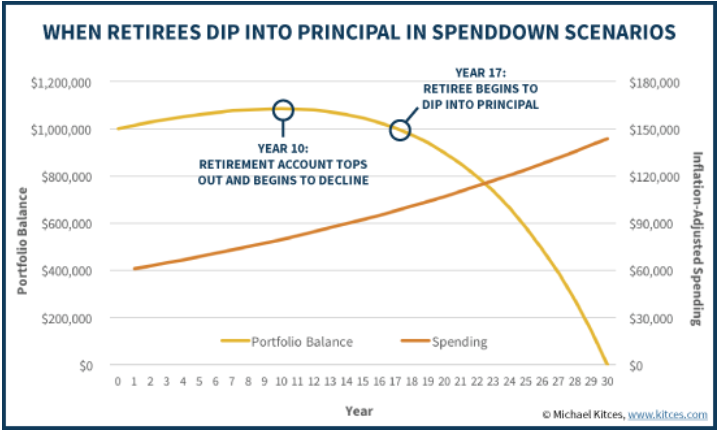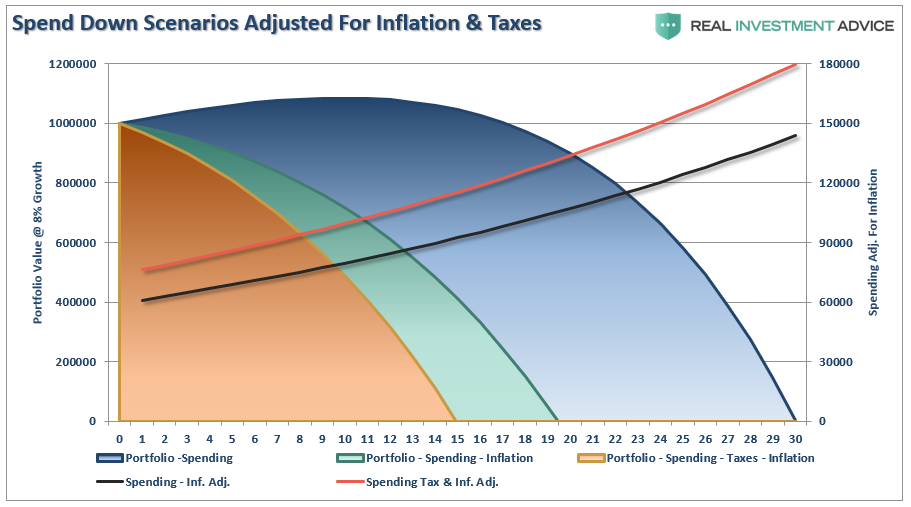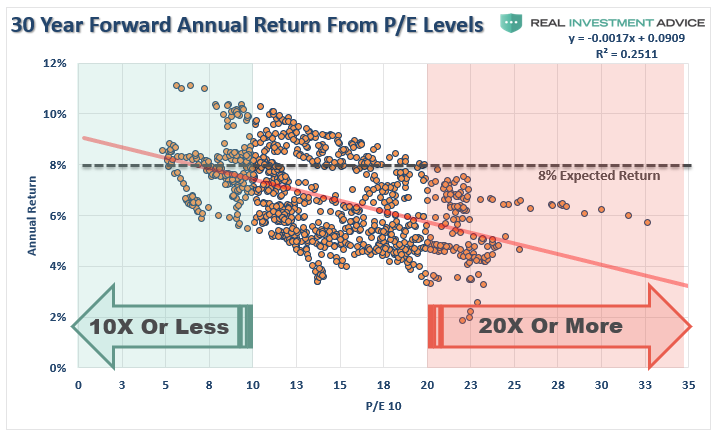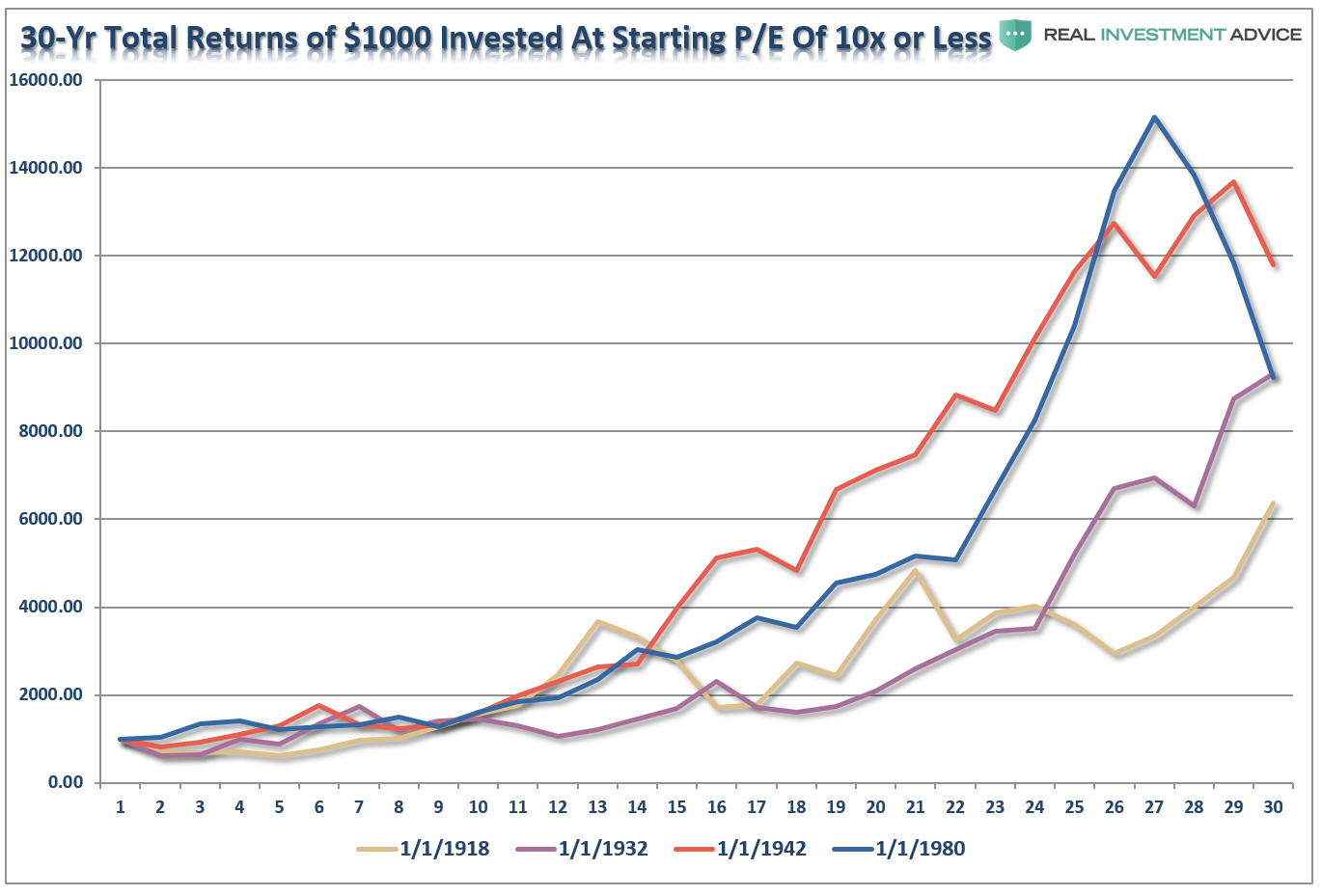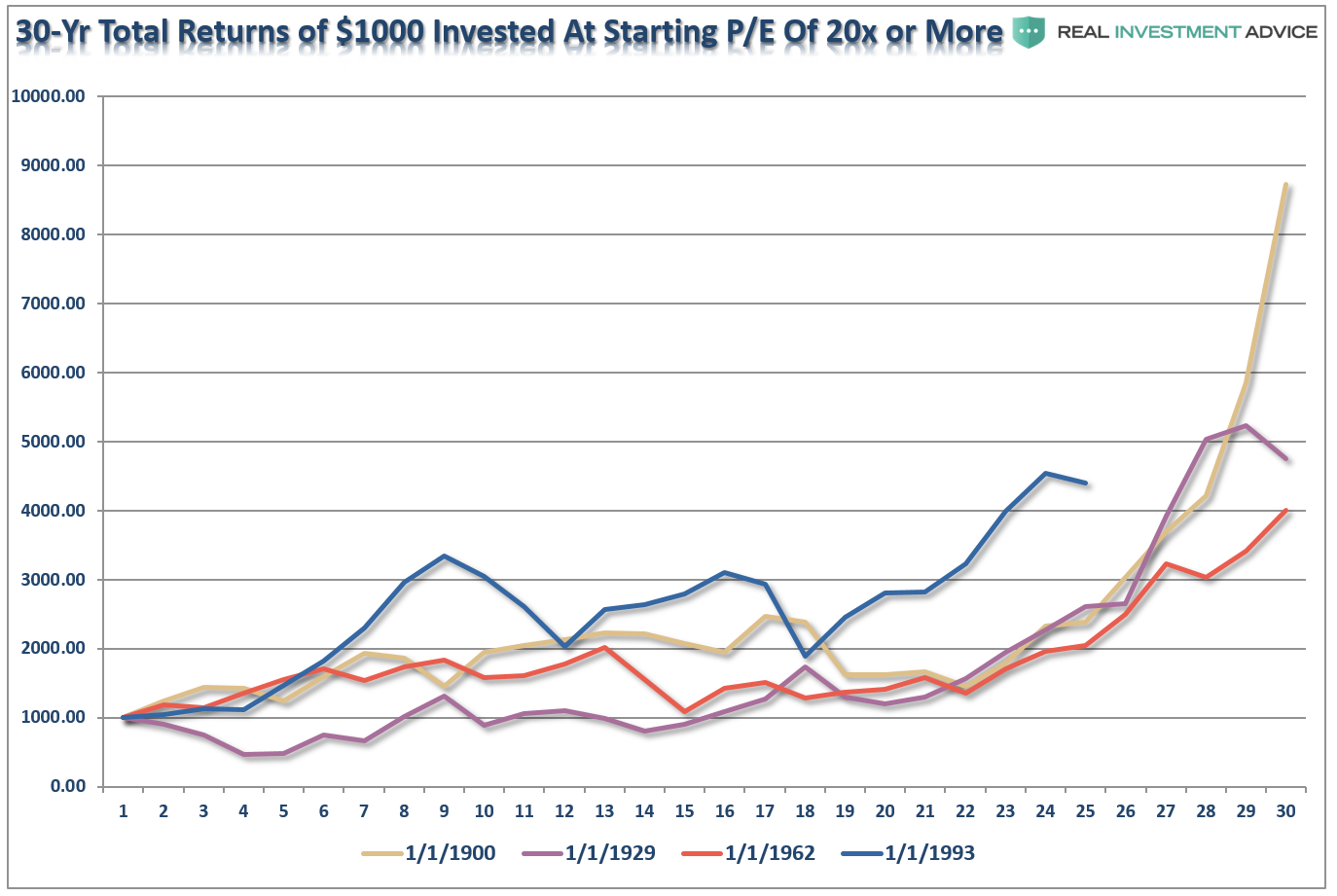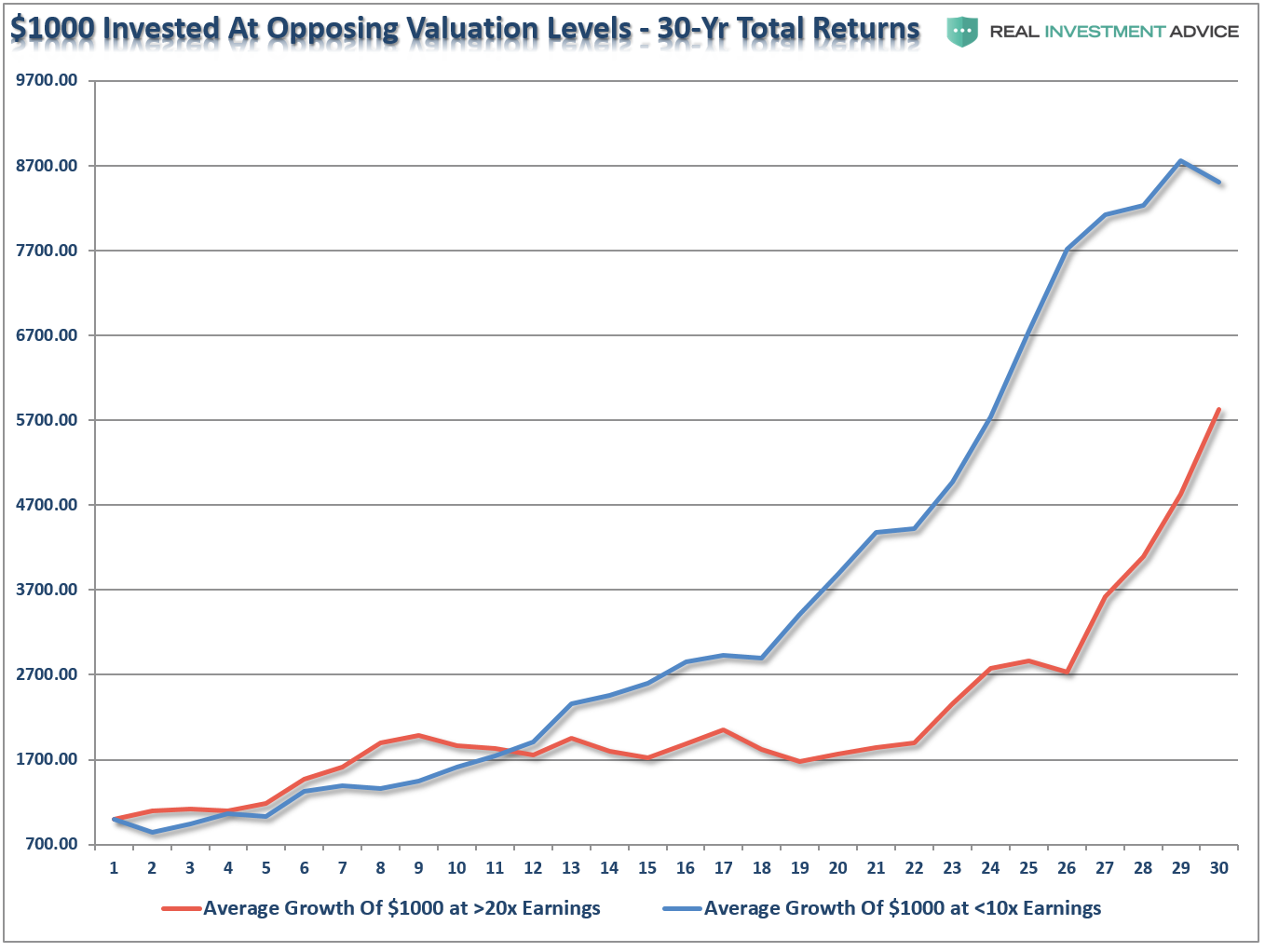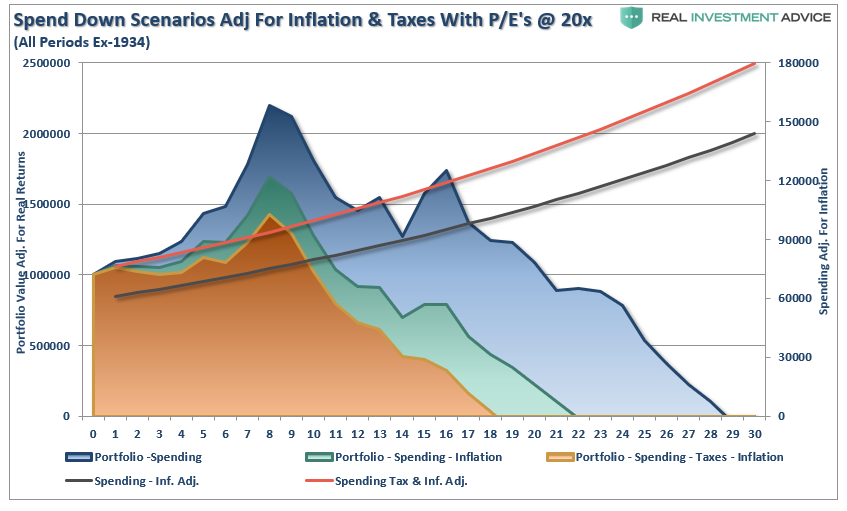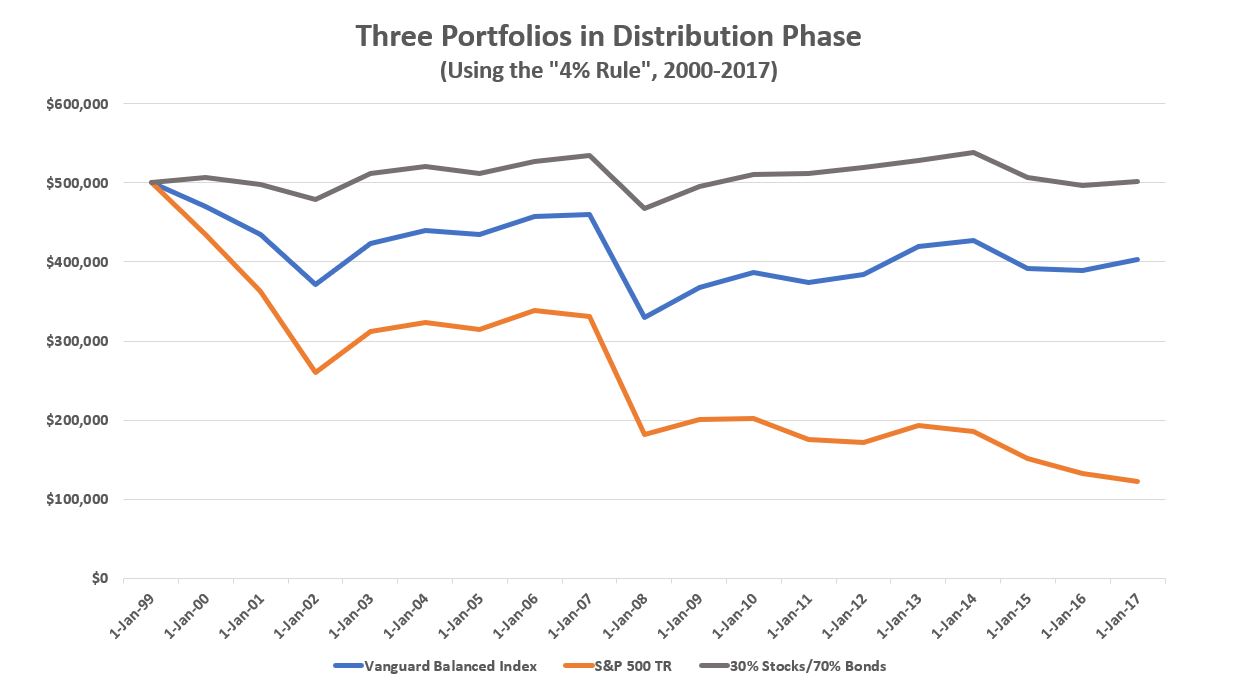Mark Hulbert recently wrote a piece suggesting “Retirees Should Not Fear A Bear Market.” To Wit:
“Don’t give up hope.
I’m referring to what many retirees are most afraid of: Running out of money before they die. An Allianz Life survey found that far more retirees are afraid of outliving their money than they are of dying—61% to 39%. This ever-present background fear is especially rearing its ugly head right now, given the bear market that too many came out of nowhere.
Retirement planning projections made at the end of the third quarter, right as the stock market was registering its all-time highs, now need to be revised.
The reason not to give up hope is that the stock market typically recovers from bear markets in a far shorter period of time than most doom and gloomers think. Consider what I found when measuring how long it took, after each of the 36 bear markets since 1900 on the bear market calendar maintained by Ned Davis Research…Believe it or not, the average recovery time was ‘just’ 3.2 years.”
Mark correctly used total return numbers in his calculations, however, while his data is correct the conclusion is not.
Here is why.
While Mark is discussing the recovery of bear markets (getting back to even) it is based on a “buy and hold”investing approach.
However, Mark’s error is that he is specifically discussing “retirees” which are systematically withdrawing capital from their portfolios, paying tax on those withdrawals (from retirement accounts) and compensating for adjustments to the cost of living (not to mention spiraling “health care” costs.)
These are the same problems which plague most of the “off the shelf” financial plans today:
- Faulty assumptions based on average historic rates of returns rather than variable rates of return, and;
- Not accounting for the current level of market valuations at the outset of the planning process.
To explain the problems with both Mark’s assumptions, and the vast majority of financial plans spit out of computer programs today, let’s turn to some previous comments from Michael Kitces.
“Given the impact of inflation, it’s problematic to start digging into retirement principal immediately at the start of retirement, given that inflation-adjusted spending needs could quadruple by the end of retirement (at a 5% inflation rate). Accordingly, the reality is that to sustain a multi-decade retirement with rising spending needs due to inflation, it’s necessary to spend less than the growth/income in the early years, just to build enough of a cushion to handle the necessary higher withdrawals later!
For instance, imagine a retiree who has a $1,000,000 balanced portfolio, and wants to plan for a 30-year retirement, where inflation averages 3% and the balanced portfolio averages 8% in the long run. To make the money last for the entire time horizon, the retiree would start out by spending $61,000 initially, and then adjust each subsequent year for inflation, spending down the retirement account balance by the end of the 30th year.”

